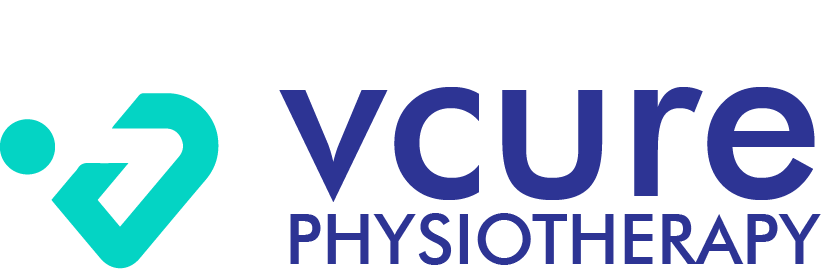Arjun was 24 when he first noticed it — a dull ache in his lower back that didn’t go away. He brushed it off as bad posture, blamed his long hours at a desk job, and moved on. But mornings began to feel different. Not tired — stiff. As if his spine was made of concrete. It wasn’t normal.
Months passed. Pain became routine. He tried stretching, warm showers, a better mattress — nothing worked. The pain crept from his lower back to his hips, and then his shoulders. Until one morning, getting out of bed took him ten whole minutes. He knew then — this wasn’t just “bad posture.”
That’s when he heard the words: Ankylosing Spondylitis (AS).

What Really Happens in Ankylosing Spondylitis?
AS is an autoimmune inflammatory arthritis primarily affecting the spine and sacroiliac joints. Think of your immune system mistakenly attacking your own joints, causing inflammation. Over time, the spine can fuse — turning flexible joints into rigid bone.
Most people assume this only happens to older adults. But AS often begins in young males — as early as the teens or twenties. Yes, it can affect females, but it’s more common and often more severe in men.
Inside Arjun’s body, his immune system was attacking the entheses — where ligaments and tendons attach to bone. Inflammation triggered pain, especially in the morning or after inactivity. If left untreated, his spine could become stiff, curved, or even hunched.
Why Diagnosis Is Often Delayed
Ankylosing Spondylitis can be sneaky. Back pain in young people is often misattributed to gym injuries, poor posture, or stress. In India, many still consult untrained practitioners, delaying the correct diagnosis.
It took Arjun almost two years before he was diagnosed by a rheumatologist. MRI scans revealed early sacroiliitis — inflammation in the joints connecting his spine to pelvis.
The Game-Changer: Physiotherapy
While medications like NSAIDs, biologics (like adalimumab) and DMARDs control inflammation, physiotherapy is non-negotiable in long-term management. Here’s what Arjun’s physiotherapy plan looked like:
1. Hydrotherapy (Aquatic Physiotherapy)
Exercising in water reduced joint stress. Warm water helped relax stiff muscles. It was Arjun’s favorite session.
2. Posture Retraining & Gait Correction
With AS, the risk of spinal curvature is real. His physio team used mirror feedback, wall-standing drills, and resistance bands to re-train his posture.
3. Thoracic Expansion Exercises
As AS can restrict rib mobility, he was taught deep diaphragmatic breathing and chest expansion routines to improve lung capacity.
4. Spinal Mobilization
Using Maitland mobilization, his therapist gently encouraged better spinal movement and reduced stiffness.
5. Functional Movement Training
From sitting down without stiffness to picking up things from the floor — real-life tasks were broken down and retrained.
6. Neuromuscular Electrical Stimulation (NMES)
Used to activate weakened muscles, especially core and glutes, which tend to shut down with chronic pain.
Emerging Therapies for AS
- AI-driven movement analysis tools: These assess gait and posture and provide custom rehab feedback.
- VR-guided home exercise routines: Making boring routines fun and immersive.
- TENS therapy via mobile apps.
- Exoskeletal support devices for severe spinal fusion cases.
Lesser-Known Facts About Ankylosing Spondylitis
- Eye involvement: AS can cause uveitis (inflammation in the eye), leading to pain and light sensitivity.
- Gut connection: Many patients have subclinical gut inflammation, linking AS to conditions like Crohn’s.
- Mental health: Depression and anxiety are common due to chronic pain and reduced mobility — something rarely discussed.
- AS worsens with inactivity, unlike typical back pain.
What to Avoid: Exercise & Yoga Poses Unsafe for AS Patients
While movement is crucial for managing Ankylosing Spondylitis, not all exercises are created equal. People with AS should avoid high-impact activities like running, jumping, or contact sports that can jar the spine or joints.
Heavy weightlifting, especially overhead lifts or deep squats, may put dangerous pressure on the spine and sacroiliac joints.
In yoga, poses that involve deep spinal twists, hyperextension of the back (like upward-facing dog or wheel pose), or prolonged forward bending (such as full seated forward folds) can trigger pain or worsen inflammation.
Headstands, shoulder stands, and plough poses are risky too, as they place significant load on the cervical spine. Instead, focus on gentle, spine-friendly movement like supported backbends, cat-cow, and chest openers, under expert supervision.
Always listen to your body — discomfort is a red flag, not a badge of progress.
Arjun Today — His Life Transformed
Now 27, Arjun does a customized physio session every morning before work. It takes just 20 minutes. But it’s non-negotiable.
He still has AS. But he controls it — it doesn’t control him anymore.
He travels, cycles, and even leads a support group for other young men with AS. His message?
“You’re not lazy. You’re not weak. You’re just inflamed. And that can be treated.”
Final Thoughts On Ankylosing Spondylitis
Ankylosing Spondylitis isn’t just about stiffness — it’s about identity, confidence, and movement. And movement is medicine.
If you’re a physiotherapist, early detection and a customized rehab plan can prevent disability.
If you’re living with unexplained back pain, especially in the morning — don’t ignore it. It could be your body’s early warning.
Also Read About : Things Top Eye Surgeons will Never Do to Their Eyes
Visit Our Doctors At : https://g.co/kgs/rTqAjgt





